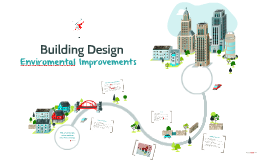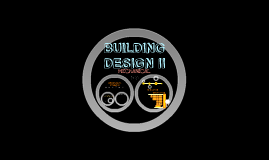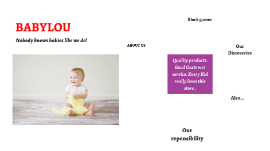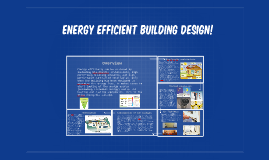Building Design
Transcript: U UD UNDERCUT DOOR UH UNIT HEATER R RF RETURN AIR FAN RH RELIEF HOOD RHC REHEAT COIL RHP RADIANT HEATING PANEL RTU ROOFTOP UNIT E EBB ELECTRIC BASEBOARD EER ENGINE EXHAUST REEL EF EXHAUST FAN EHC ELECTRIC HEATING COIL ERV ENERGY RECOVERY VENTILATOR ET EXPANSION TANK EUH ELECTRIC UNIT HEATER Escalators are required to have moving handrails that keep pace with the movement of the steps. The direction of movement (up or down) can be permanently the same, or be controlled by personnel according to the time of day, or automatically be controlled by whoever arrives first, whether at the bottom or at the top (the system is programmed so that the direction is not reversed while a passenger is on the escalator). Elevators themselves are simple devices, and the basic lifting systems have not changed much in over 50 years. The control systems, however, have changed substantially to improve safety and speed of operation. Elevators are designed for a specific building, taking into account such factors as the height of the building, the number of people travelling to each floor, and the expected periods of high usage. K KW KILOWATT BUILDING DESIGN II N (N) NEW N/A NOT APPLICABLE NC NOISE CRITERIA NIC NOT IN CONTRACT NO. NUMBER NOP NORMALLY OPEN NTS NOT TO SCALE K KH KITCHEN HOOD KMU KITCHEN MAKEUP UNIT O OA OUTSIDE AIR OBD OPPOSED BLADE DAMPER OC ON CENTER OD OUTSIDE DIAMETER S ST SOUND TRAP G GMU GLYCOL MAKE-UP UNIT GRH GRAVITY RELIEF HOOD GRV GRAVITY VENT D DC DRY COOLER DH DEHUMIDIFIER ABBREVIATIONS V VAV VARIABLE AIR VOLUME BOX VF VENTILATION FAN L LPP LIQUID PROPANE PUMP LPT LIQUID PROPANE TANK LPV LIQUID PROPANE VAPORIZER F F FARENHEIT FA FACE AREA FC FAN COIL FC FLEXIBLE CONNECTOR FD FIRE DAMPER FF FOULING FACTOR FLA FULL LOAD AMPS FM FLOW METER FPI FINS PER INCH FPS FEET PER SECOND FS FLOW SWITCH FT FEET FVEL FACE VELOCIT The benefits of escalators are many. They have the capacity to move large numbers of people, and they can be placed in the same physical space as one might install a staircase. They have no waiting interval (except during very heavy traffic), they can be used to guide people toward main exits or special exhibits, and they may be weatherproofed for outdoor use. It has also been observed that a non-functioning escalator simply becomes a normal staircase, whereas many other conveyances become useless when they break down. Modern commercial buildings commonly have multiple elevators with a unified control system. The object of the control system is to minimize the average time any passenger spends from the time the elevator call button is pushed to the arrival of the first available elevator. Different systems use different levels of sophistication. The simplest systems use a single up and down button on each floor regardless of the number of elevators. When a passenger calls for an elevator, the controller sends the nearest elevator that is travelling in the desired direction. The approach of an elevator car is signalled by an illuminated arrow above the elevators doors pointing up or down. Escalators have three typical configuration options: parallel (up and down escalators "side by side or separated by a distance", seen often in metro stations and multilevel motion picture theaters), crisscross (minimizes structural space requirements by "stacking" escalators that go in one direction, frequently used in department stores or shopping centers), and multiple parallel (two or more escalators together that travel in one direction next to one or two escalators in the same bank that travel in the other direction). Escalators, like moving walkways, are powered by constant-speed alternating current motors and move at approximately 1–2 feet (0.30–0.61 m) per second. The typical angle of inclination of an escalator to the horizontal floor level is 30 degrees with a standard rise up to about 60 feet (18 m). Modern escalators have single-piece aluminum or stainless steel steps that move on a system of tracks in a continuous loop. M MA MIXED AIR MAX MAXIMUM MBH THOUSANDS BTU’S PER HOUR MD MOTORIZED DAMPER MH MOUNTING HEIGHT MIN MINIMUM MS MOTOR STARTER MW MAKE-UP WATER HVAC ( HEATING, VENTILATION AND AIR CONDITIONING) E (E) EXISTING EAT ENTERING AIR TEMPERATURE EDH ELECTRIC DUCT HEATER EER ENERGY EFFICIENCY RATING EF EXHAUST FAN EEF EFFICIENT EL ELEVATION ELECT ELECTRICAL EWTEN ETERING WATER TEMPERATURE EXH EXHAUST ELEVATOR C CD CEILING DIFFUSER CD CONDENSATE DRAIN CF CUBIC FOOT CFM CUBIC FEET PER MINUTE CL CENTERLINE CV CHECK VALVE CH CHILLER COP COEFFICIENT OF PERFORMANCE CONT. CONTINUATION CT COOLING TOWER CU CONDENSING UNIT CV VALVE FLOW COEFFICIENT CW COLD WATER P P PUMP PD PRESSURE DROP PH PHASE PR VPRESSURE REDUCING VALVE PSI POUNDS PER SQUARE INCH 5 TERMINOLOGIES Crisscross Escalator MECHANICAL 2 H HD HEAD HP HEAT PUMP HP HORSE POWER HTG HEATING HTR HEATER HWC HOT WATER COIL F F FILTER FC FLUID COOLER FCU FAN COIL UNIT FTR FIN TUBE RADIATION FTU FAN TERMINAL UNIT 4 ESCALATOR GENERAL TERMINOLOGIES B B

















